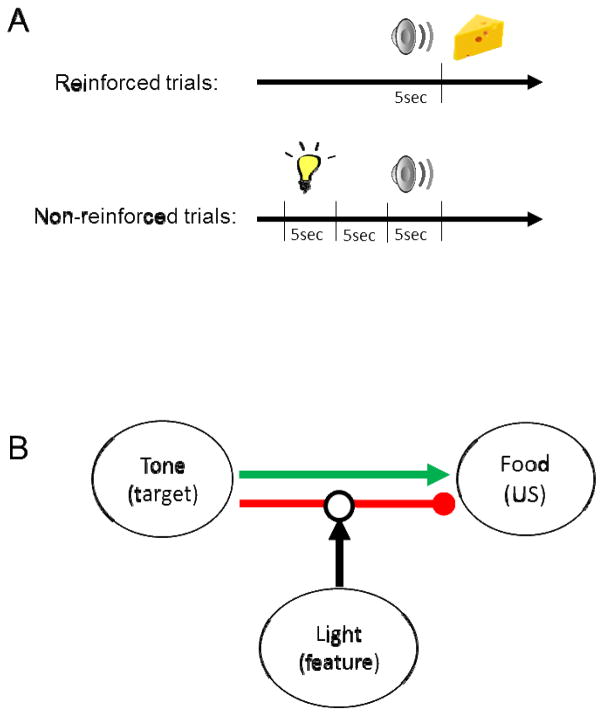Figure 1.
A) Illustration of the two types of training trials used in our standard negative occasion setting procedure with rats. The feature (light) and target (tone) are each presented for 5 sec and the interval between them on non-reinforced trials is also 5 sec. On reinforced trials, food is delivered immediately after the tone is terminated. B) Model of the associations that are thought to be formed during negative occasion setting [40]. Red and green lines indicate inhibitory and excitatory relationships in the behavioral procedure, respectively (US = unconditioned stimulus). The feature stimulus acts to gate, or ‘set the occasion’ for the meaning of the target stimulus and indicates that a response should be withheld during the subsequent presentation of the target.

